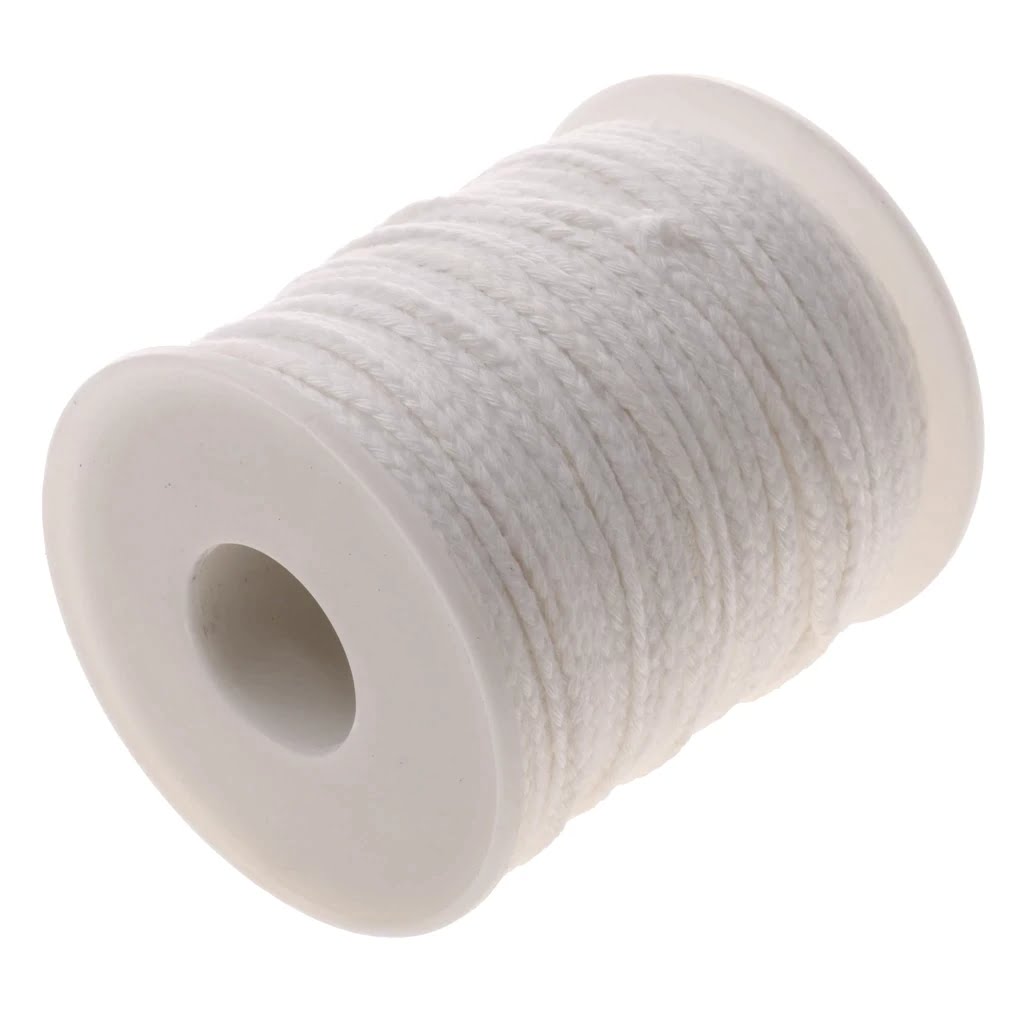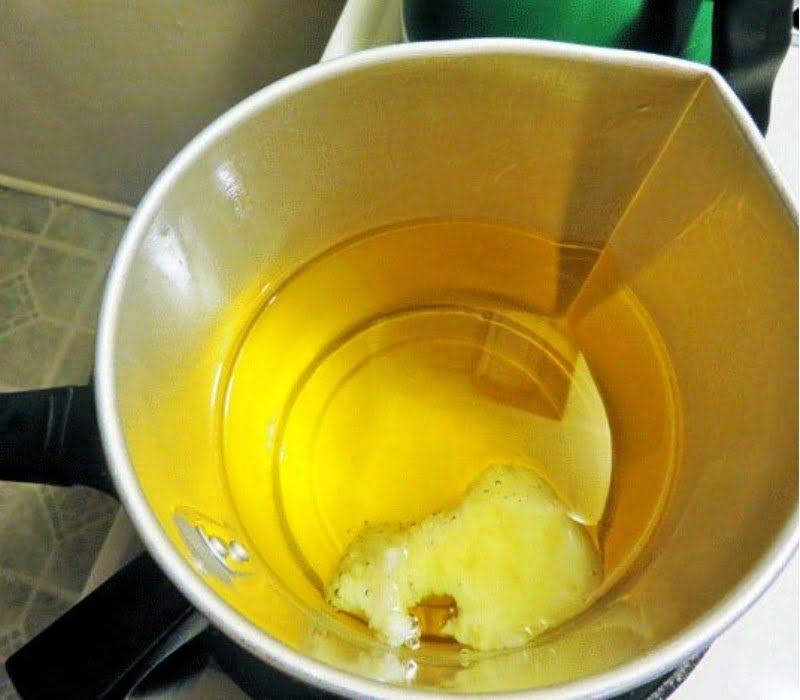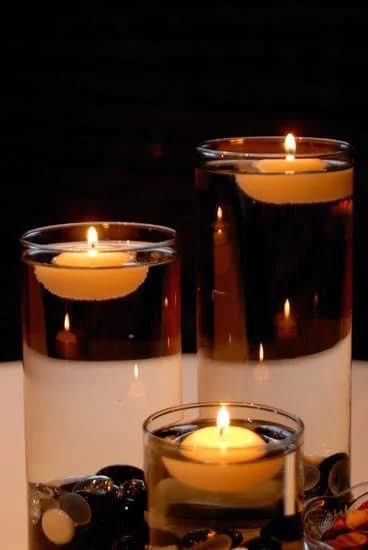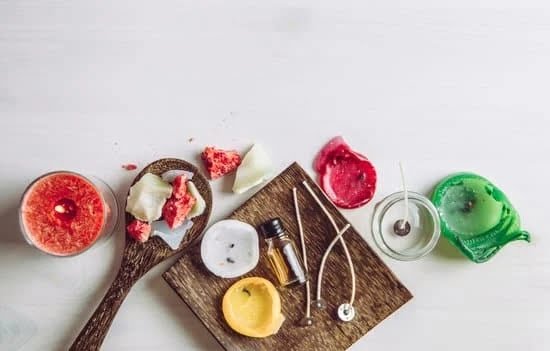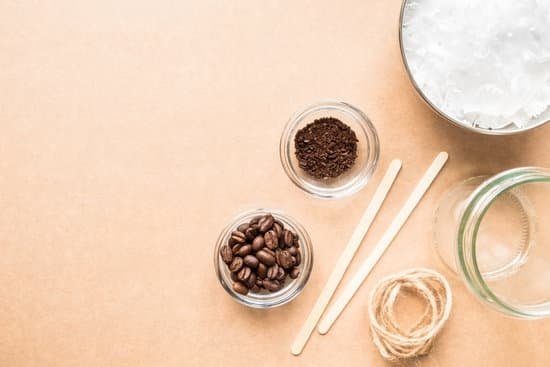Candle making has long been a popular craft, allowing individuals to create beautiful and fragrant additions to their homes. The flickering flame and gentle glow of a candle can instantly create an atmosphere of relaxation and tranquility. But have you ever wondered if there is more to candles than just their aesthetic appeal? Can essential oils be used in candle making to enhance the experience with delightful scents and potential therapeutic benefits?
In this article, we will delve into the fascinating realm of using essential oils in candle making. We will explore the basics of how essential oils work in candles and uncover the potential benefits that these aromatic oils can bring. Furthermore, we will compare essential oils with fragrance oils to determine which is the better choice for creating scented candles.
Choosing the right essential oils is crucial for creating candles that not only smell amazing but also offer complementary scents. We will provide a useful guide to popular essential oil scents and their combinations, helping you curate your own sensory experiences through custom-made candles. However, it’s important to note that safety precautions must be followed when working with essential oils in candle making.
By the end of this article, you will not only gain valuable insight into using essential oils effectively in candle making but also discover DIY recipes for creating your own unique aromatherapeutic candles. Whether you are a novice or an experienced candle maker, embarking on this aromatic journey will unlock infinite creative possibilities for enhancing your space with the power of scent.
So let’s begin exploring the world of essential oil-infused candles and dive into the art of igniting blissful fragrances through candle making.
Understanding the Basics
Essential oils have become a popular choice for candle making enthusiasts due to their natural and therapeutic properties. But how exactly do essential oils work in candle making? Understanding the basics of this process can help you make informed decisions when it comes to creating your own scented candles.
Firstly, it’s important to note that essential oils are highly concentrated plant extracts obtained through various extraction methods such as steam distillation or cold pressing. These oils contain aromatic compounds that give them their unique scents and therapeutic benefits. When used in candle making, the heat from the burning wick causes these essential oils to evaporate and disperse into the air.
To incorporate essential oils into candles, they are typically added during the wax melting process. Whether using soy wax, beeswax, or another type of candle wax, essential oils can be blended directly into the melted wax before pouring it into the candle container or mold. The amount of essential oil needed will depend on factors such as the desired scent strength and size of the candle.
It’s worth noting that essential oils have different flashpoints, which is the temperature at which they can catch fire if exposed to an open flame. Some essential oils have low flashpoints and may not be suitable for use in candles unless they are specially formulated for candle making. It’s important to check product guidelines and consult reliable resources when choosing which essential oil to use in your candles.
Here are some key points about how essential oils work in candle making
- Essential oils are highly concentrated plant extracts obtained through various extraction methods.
- When used in candles, the heat from the burning wick causes these oils to evaporate into the air.
- Essential oils are blended directly into melted wax before pouring it into a container or mold.
- Flashpoints of essential oils should be considered to ensure safety during the candle making process.
- The amount of essential oil needed depends on the desired scent strength and candle size.
Understanding how essential oils work in candle making is crucial for creating candles that not only provide a pleasant aroma but also offer the therapeutic benefits associated with these natural extracts. By incorporating essential oils into your candle-making process, you can elevate your crafting experience and create unique scents that promote relaxation, focus, or other desired effects.
Unleashing the Power of Scents
The use of essential oils in candle making goes beyond just creating a pleasant aroma. These concentrated plant extracts offer a range of benefits that can enhance your well-being and create a truly immersive sensory experience. Here are some of the key benefits of using essential oils in candles:
- Aromatherapy: Essential oils have long been used in aromatherapy to promote relaxation, reduce stress, and improve mood. When infused into candles, these aromatic oils release their therapeutic scents into the air, allowing you to enjoy the benefits of aromatherapy in your own space. For example, lavender essential oil is known for its calming properties, while citrus oils like lemon and bergamot can uplift and energize.
- Natural and Chemical-free: One major advantage of using essential oils in candles is that they provide a natural alternative to artificial fragrances found in many commercial candles. Synthetic fragrance oils often contain harmful chemicals such as phthalates, which can lead to respiratory issues and other health concerns. Essential oils, on the other hand, are derived from plants and offer a more natural and sustainable option for scenting candles.
- Customization Options: With a wide variety of essential oils available, candle makers have endless options for creating unique blends and custom scents according to their preferences or specific purposes. Whether you want to create a relaxing atmosphere for meditation or a refreshing ambiance for your workspace, you can experiment with different combinations of essential oils to achieve the desired effect.
When using essential oils in candle making, it’s important to note that not all essential oils are created equal. Some may have lower flash points than others, meaning they can cause candles to ignite if used improperly or at high concentrations. Therefore, it’s crucial to follow safety guidelines and properly research each oil before incorporating it into your candle recipes.
Essential Oils vs. Fragrance Oils
When it comes to creating scented candles, one of the key decisions you’ll need to make is whether to use essential oils or fragrance oils. Both options have their own unique characteristics and advantages, so it’s important to understand the differences between the two before making your choice.
Essential Oils
Essential oils are derived from natural plant materials through processes like distillation or cold-pressing. They are highly concentrated and carry the natural aroma and therapeutic properties of the plants they’re derived from. Essential oils offer a wide range of scents, from floral and citrusy to woody and herbal. In addition to their aromatic qualities, many essential oils also boast various health benefits such as promoting relaxation, boosting mood, or alleviating respiratory issues.
Fragrance Oils
On the other hand, fragrance oils are synthetic compounds created to mimic specific scents. They’re often made from a combination of natural and synthetic ingredients, giving candle makers endless possibilities in terms of scent variety and creativity. Fragrance oils can accurately replicate almost any aroma imaginable – from fresh-baked cookies to ocean breezes – making them a popular choice for those seeking unique or complex scent combinations.
So which option should you choose for your scented candles? Ultimately, it depends on your personal preferences and goals as a candle maker. Essential oils offer a more natural approach with their pure botanical extracts and potential therapeutic benefits. However, they can be more expensive than fragrance oils and may have limitations when it comes to achieving certain scent profiles.
Fragrance oils, on the other hand, provide an extensive range of scents that can’t be matched by essential oils alone. They’re often more affordable and easier to work with due to their consistent quality. However, some people may prefer the authenticity of essential oils or have sensitivities to synthetic fragrances.
Choosing the Right Essential Oils for Candle Making
When it comes to choosing the right essential oils for candle making, there are a wide variety of options available. The scent you choose for your candles can greatly impact their mood-enhancing qualities and overall appeal. Here is a guide to popular and complementary scents that can help you create the perfect atmosphere with your homemade candles.
Popular Essential Oil Scents
- Lavender: Known for its calming and relaxing properties, lavender essential oil is a popular choice in candle making. It can promote relaxation and help relieve stress and anxiety.
- Citrus: Scents like lemon, orange, and grapefruit are refreshing and uplifting. They can enhance focus, boost energy, and create a cheerful atmosphere.
- Eucalyptus: This invigorating scent is often used for its purifying and cleansing properties. It can also help clear respiratory congestion, making it an ideal choice for candles in the winter months or during cold season.
- Peppermint: Peppermint essential oil has a cooling effect that can soothe headaches, relieve muscle tension, and promote mental clarity. It is perfect for creating an energizing and uplifting ambiance.
Complementary Scents
- Vanilla: Vanilla essential oil has a warm, sweet aroma that blends well with many other scents. It adds a cozy and comforting element to any candle fragrance blend.
- Rosemary: Rosemary essential oil has a fresh, herbal scent that pairs well with citrus or lavender scents. It can improve concentration and provide mental clarity.
- Sandalwood: With its rich, woody aroma, sandalwood essential oil adds depth and warmth to any candle fragrance combination. It is often used in meditation or relaxation candles.
- Patchouli: Patchouli essential oil has an earthy scent that complements floral or woodsy aromas. It is known for its grounding and balancing properties.
When choosing essential oils for your candles, consider the purpose of the candle and the kind of atmosphere you want to create. Experiment with different combinations to find your signature scent or create unique blends for different occasions or moods. Remember to use high-quality essential oils that are specifically labeled for candle making to ensure optimal scent throw and performance.
Safety Precautions
Essential oils are a popular choice for adding fragrance to candles, but it is important to use them safely and appropriately in the candle-making process. This section will outline some essential oil dos and don’ts to ensure that your candle-making experience is both enjoyable and safe.
Dos:
- Dilute Essential Oils: Essential oils are highly concentrated and should always be diluted before using them in candle making. This helps to prevent skin irritation and ensures that the scent is not overpowering. A general guideline is to use about 1 ounce of essential oil per pound of wax.
- Test Essential Oils: Before committing to a large batch of scented candles, it’s important to test the essential oils you plan on using. Make a small sample candle with the diluted oil and burn it for a few hours to see if you like the scent and how it performs during burning.
- Use High-Quality Oils: Not all essential oils are created equal, so it’s important to invest in high-quality oils from reputable sources. Look for oils that are 100% pure, therapeutic grade, and have been properly tested for quality.
Don’ts:
- Overload Candles with Oils: While it may be tempting to add more essential oil for a stronger scent, this can actually cause your candle to burn improperly or even pose a fire hazard. Stick to the recommended guidelines for dilution and do not exceed the recommended amount.
- Use Fragrance Oils Instead: Fragrance oils may be less expensive than essential oils, but they are synthetic and do not offer the same benefits as natural essential oils. Stick with using pure essential oils in your candles for a more natural and aromatic experience.
- Neglect Safety Precautions: Remember that safety should always be a top priority when working with any type of candle-making ingredients, including essential oils. Always follow proper safety guidelines such as wearing gloves and protective eyewear when handling oils, keeping oils away from open flames or heat sources, and storing them securely in a cool, dark place.
Implementing these essential oil dos and don’ts will help you create beautifully scented candles that are both safe and enjoyable to use. By taking the necessary precautions and selecting high-quality oils, you can unlock the aromatic possibilities of essential oil-infused candles.
| Essential Oil Dos | Essential Oil Don’ts |
|---|---|
| Dilute Essential Oils | Overload Candles with Oils |
| Test Essential Oils | Use Fragrance Oils Instead |
| Use High-Quality Oils | Neglect Safety Precautions |
DIY Essential Oil Candle Recipes
Candle making is not only a fun and creative hobby, but it also allows you to explore the aromatic possibilities of essential oils. By infusing your candles with essential oils, you can create a relaxing and soothing atmosphere while enjoying the benefits of aromatherapy. In this section, we will provide you with step-by-step instructions for creating DIY essential oil candle recipes that will bring aromatherapy bliss into your space.
To begin, gather all the necessary materials and equipment for candle making. This includes soy wax or beeswax, candle wicks, jars or containers for your candles, a double boiler or microwave-safe container for melting the wax, a thermometer, and of course, your desired essential oils.
Once you have everything ready, start by melting the wax using either the double boiler method or the microwave method. If using a double boiler, fill the bottom pot with water and place it on low heat. Put the wax in the top pot and stir occasionally until fully melted. If using a microwave-safe container, heat in short intervals and stir between each interval until fully melted.
Next, let the melted wax cool to about 140-160 degrees Fahrenheit before adding your essential oils. This temperature range ensures that the fragrance of the oils is preserved. Add about 1 ounce of essential oil per pound of wax for optimal scent intensity.
Stir gently to ensure that the essential oils are well incorporated into the wax. Avoid vigorous stirring as it may introduce air bubbles into your candles. Once completely mixed, pour the scented wax into your chosen containers while keeping an eye on the wick placement.
Allow your candles to cool and set completely before trimming the wicks to about ¼ inch in length. This will ensure a clean and even burn when you light your candles.
With these step-by-step instructions, you can now confidently create DIY essential oil candle recipes that will fill your space with aromatherapy bliss. Experiment with different essential oil blends and combinations to create your own unique scents and enjoy the benefits of aromatherapy while enjoying the warm glow of your handmade candles.
Troubleshooting Tips
When using essential oils in candle making, there may be some common challenges that arise. These challenges can include issues with scent throw, discoloration, and wick performance. However, with the right troubleshooting tips and solutions, these challenges can easily be overcome.
One common challenge that candle makers may face when using essential oils is achieving a strong scent throw. Essential oils have a different intensity compared to fragrance oils, so it’s important to use the appropriate amount for an optimal scent experience. If you find that your candles are not emitting enough fragrance, you can try increasing the amount of essential oil used in your recipe.
However, it is important to exercise caution and refer to recommended usage rates for each individual oil. Additionally, allowing your candles to cure for at least 24 hours before testing their scent throw can also help enhance the fragrance.
Another challenge that may arise when working with essential oils is discoloration. Some essential oils have a natural tendency to cause color changes in candles. To combat discoloration, you can try adding a UV inhibitor or stabilizer to your wax before adding the essential oils. These additives can help prevent or minimize any color changes caused by the oils. Additionally, choosing lighter colored waxes or using mica powder or candle dyes can also help mask any discoloration.
Wick performance is another important aspect to consider when using essential oils in candle making. Essential oils tend to have thicker consistencies compared to fragrance oils, which can impact how well the wick burns and influences the overall performance of the candle. If you find that your wick is drowning or sputtering, it may be due to the viscosity of the oil.
To resolve this issue, you can try using a larger size wick or consider blending the essential oil with a carrier oil before adding it to your wax. This will help thin out the oil and improve its compatibility with the wick.
Final Thoughts
In conclusion, the use of essential oils in candle making opens up a world of infinite possibilities. By infusing our candles with these aromatic oils, we can create unique and personalized scents that not only fill our space with delightful fragrances but also offer therapeutic benefits.
Essential oils work their magic through the process of aromatherapy, which involves inhaling the scent molecules that are released when the candle is burned. These molecules interact with our olfactory system, triggering various responses in our brain and body. Whether you’re looking to relax, uplift your mood, or even alleviate certain physical ailments, there is an essential oil out there that can help achieve your desired effect.
One of the advantages of using essential oils in candle making is that they come from natural sources such as plants and flowers. This means that not only are they free from harmful chemicals, but they also carry the pure essence and energy of their botanical origins. In contrast, fragrance oils are synthetic and do not offer the same holistic benefits as essential oils.
When choosing essential oils for your candles, it’s important to consider both popular scents as well as complementary ones. This allows you to create complex fragrance combinations that appeal to different preferences and create a unique sensory experience. Additionally, it’s crucial to follow safety precautions when handling essential oils to ensure proper usage and avoid any potential hazards.
Overall, experimenting with essential oil-infused candles can be a rewarding journey filled with creativity and self-expression. Aromatherapy has long been appreciated for its ability to enhance our well-being, and now we have the opportunity to bring this practice into our homes through candle making. So go ahead and unlock the infinite creative possibilities of essential oil-infused candles – let your senses guide you on an aromatic adventure like no other.
Frequently Asked Questions
What essential oils are safe for candle making?
When it comes to candle making, there are several essential oils that are safe to use. Some popular and widely used essential oils in candle making include lavender, eucalyptus, peppermint, lemon, rosemary, and chamomile.
These oils not only provide a pleasant fragrance but also have their own therapeutic benefits. It’s important to ensure that the essential oils you use for candle making are of high quality and suitable for skin contact if you plan on using the candles topically or in aromatherapy.
Can I add essential oils to wax to make candles?
Yes, you can definitely add essential oils to wax to make candles. In fact, adding essential oils is a common practice in candle making as it allows for the creation of beautifully scented candles.
To incorporate essential oils into your candles, you’ll need to melt the wax at an appropriate temperature and then add the desired amount of essential oil to the melted wax before pouring it into the candle molds or containers. It’s important to follow proper guidelines and calculate the appropriate percentage of essential oil based on the type of wax being used to ensure safe and effective scenting.
Can you mix essential oil and fragrance oil in candle making?
Mixing essential oil and fragrance oil in candle making is possible if you want to achieve a unique scent blend or enhance the fragrance throw of your candles. However, it’s crucial to note that not all fragrance oils are suitable for mixing with essential oils due to differences in composition and compatibility.
It’s advisable to conduct small test batches when mixing these two types of oils together before incorporating them into larger quantities of wax. Additionally, consult reputable sources for guidance on which specific combinations of essential and fragrance oils work well together to create harmonious scents without compromising safety or quality standards in your candle-making process.

Welcome to my candle making blog! In this blog, I will be sharing my tips and tricks for making candles. I will also be sharing some of my favorite recipes.

